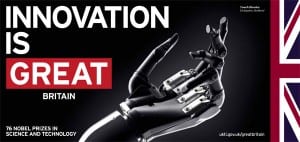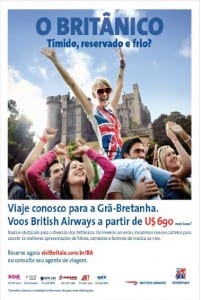Perceptive readers of this blog will notice that I tend to draw on a lot of history – and especially military history – analogies. (So as you can imagine I am loving doing all the work on our culture and heritage blogs right now – and watching with great interest all the coverage for the Anzac Day Centenary) My piece on tourism strategy about asking the right questions, and the lessons from World War II drew on Margaret Macmillan’s great book ‘The War that Ended Peace” to see the lessons for strategy in tourism businesses. As I noted then, there have been no shortages of books on the subject around the centenary. Alongside Dr. Mitchell’s, Dr. Christoper Clark’s ‘The Sleepwalkers” has garnered much of the best feedback.
Perceptions shaped the road to World War I
Whilst there is some overlap in their conclusions, there are also some fascinating differences. What stood out for me from ‘The Sleepwalkers” is the extent to which perceptions of the other sides’ motivations refracted through complex and political decision-making structures to become a factor in the escalating crisis and indeed directly contributed to the final decision for war. Reading the book one gets the sense of a fatal game of Blind Man’s Buff where each side is trying to send messages to the other that are clear to them, but consistently being misread by the other side. So a partial mobilisation by Russia along its Eastern Front was intended to give the Germans (who they perceived were the driving force behind Austria-Hungary’s declaration of war on Serbia) a pause. But was read by the Germans (who were anxious to contain the war to the Balkans) as a signal that Russia wanted an all-out war. Furthermore, all the evidence that would contradict this was downplayed relative to that which supported the theory – or shoehorned to fit it. The whole book is full of incidents like this.
As I have noted before in my blogs on Anzac Day and tourism strategy, I am NOT saying the challenges we face as marketers are morally equivalent to or as important as these historic events. But I do think the very scale of what happened provides an example ‘writ large’ that enables us to think differently about things.
How perceptions shape consumer travel decisions too
We see this ‘perception is reality’ challenge all the time in tourism marketing. Bronwyn and I have lost count of the number of times we have heard bewildered destination marketers or tourism businesses protest about the customer’s mistaken perceptions after a survey or a focus group. Or even in their actual behaviour.
But when the customer is making a decision that perception IS their reality and they are making it in a complex multi-faceted world. You may live and breathe your business or destination. But even if your customer loves you or loves travel, they are typically making their decision against a highly competitive background and with competition for dollars for other activities.
For example, I hear destinations talk all the time about how their beautiful beaches make them unique. At the same time, the Coastal Studies Unit at the University of Sydney has counted 10,685 beaches in Australia. My experience is that in different ways at least 90% of these beaches are incredibly beautiful places and that many of them offer similar experiences. There’ll be thousands that are remote and hundreds accessible from a capital city. There are similarly hundreds that are surf beaches or safe swimming beaches, that are great at different seasons and are close to wineries or natural wonders. Incidentally, Bali, Hawaii, and the Philippines have beautiful beaches and are cheaper than Australia. Their beaches may be no more beautiful than Australia but they might be beautiful enough. So from the consumer’s point of view, your beach may not be as unique as you think or may not be unique in ways that matter to consumers enough for them to choose you.
Similarly, I’ve just returned from Queensland’s Granite Belt wine region. I can’t count how many people, including those from Queensland itself, were surprised at this. A typical comment was ‘Good luck with that!’ Yet the Granite Belt is a high-altitude area (one of Australia’s highest wine regions as it happens) that genuinely has four seasons and good soil for wine. It won a similar number of trophies to other better-known wine regions and we were blown away by the quality of the wines we tasted. But that perception of Queensland and wine is one that prevents many people from trying or buying wine for the region – and from visiting. (My top tip – you’re missing out!)
So what should we be doing about this?
Firstly, you need to know what those perceptions are. Know what they don’t know – and what they can be persuaded to believe.
Importantly, weigh the evidence that is unpleasant or counterfactual very carefully before you reject it. At the same time, give that which is good news or confirms your current view a higher threshold or proof than the bad news. Ask yourself ‘Do I believe this because I want to?’ Try to imagine being (or ask) someone who is less partial how it looks to them.
Secondly, find out who can be most easily persuaded and what is the most persuasive way to talk to them.
Here are two great examples of this:
- All advanced economies are looking to build a reputation for innovation that can drive investment in businesses and future-proof their economies. But if you are a country like Britain which is known for heritage and tradition it can be hard for people to see you as an innovator. As someone born in Britain, I know that we invented the jet engine, the computer, and Dolly the Sheep. So Britain has used things that people DO know and believe about like its knowledge and authority to promote innovation. I’ve raved about Britain’s Great Country branding before but their innovation message is spot on.
- Although the Granite Belt still has a lot to do to overcome the perception issue, they (or Brisbane Marketing/Tourism and Events Queensland) did a very smart thing last year. When Brisbane hosted the G20, they made sure that Queensland wine was served at all functions. Now, this isn’t unusual for most areas, but where your wine has a perception issue it is still a brave thing to do. Just as importantly, they linked it explicitly to marketing content. As an attendee at the Brisbane Global Café, everywhere I turned there were racks of brochures about visiting the area. I’d had one or two wines from there over the years at restaurants in Sydney (which is going to make every NSW winemaker reading this annoyed) but had always seen that as an outlier. The wines at the conference and the book convinced me that there was a region worth visiting. It is also a safe bet that an event like the Global Café is going to be filled with opinion formers and leaders – including those who get pleasure from showing leadership or doing things a bit differently. So by targeting that audience, they were reaching a group who were open to hearing the message. (And when I look at how much wine we bought, my feeling is that I’ve single-handedly paid for that brochure racking in terms of economic benefit to the region!)
Thirdly, identify and leverage your advocates to take the message out.
Again look at the great job I have just done in promoting both Britain and the Granite Belt. I’m someone who is seen by my friends as a bit of a wine buff so when I tell people I’ve been to the Granite Belt they are going to take my views seriously (especially as I am not a Queenslander). And it’s nice to feel like you have the inside track on something most people don’t know – so telling people makes me feel good. So equip your customers with stories to tell and use the content they generate for you – and acknowledge what they do.
Fourthly, consider owning or acknowledging the misperception in the content you create. It takes a lot to disrupt engrained beliefs, so use contrast and disruption in your marketing and content. There are some great examples you can look at for inspiration on this:
- Visit California has used a mixture of what people do know about it (it’s the home of stars) and what they perceive about it that is a barrier to choice (it’s also the home of workaholic techies in Silicon Valley) in a range of great campaigns.
 Visit Britain has a campaign for Brazil that uses the global perception of Britain as a living museum as an entry point to showcase more appealing activities like music festivals to young Brazilians.
Visit Britain has a campaign for Brazil that uses the global perception of Britain as a living museum as an entry point to showcase more appealing activities like music festivals to young Brazilians. - Not everyone likes it, but Singapore’s Get Lost campaign challenges the perception that Singapore is a staid and boring place to visit.
- Another great example from another category is Bushell’s Australian Tea campaign. It juxtaposes the idea that drinking tea is staid and rather British by using the contrast between its posh English voiceover and visuals of Australians enjoying tea in distinctively Australian situations. Not accidentally, this also provides a reason to choose Bushell’s over brands like Twinings when you are at the FMOT (the first moment of truth in buying i.e. stood at a row of 20 brands of tea in a supermarket).
Finally, stick at it! The longer you keep working on it, the more people you are going to convince. We now know that evolution of good branding and communications (rather than revolution) is a way more effective strategy. Who now remembers Singapore Airlines was seen as the underdog against Malaysia Airlines when it was launched? That’s because the airline has built a consistent positioning over many years.
But when you are doing so, remember the message from the failed diplomacy of a century ago that perception is reality. I’m not saying failing to do so will result in such catastrophic results. But I am saying it will save and create jobs, build economic advantage for your destination or business, and make your marketing more effective. One hundred years on that is still a lesson worth learning.
Do you want to hear more from us?
Want to be kept up to date with the latest travel and tourism insights? Join Our Mailing List. Every 2 weeks, we send the latest practical insight for you to apply to your business and destination marketing.






Leave a Reply